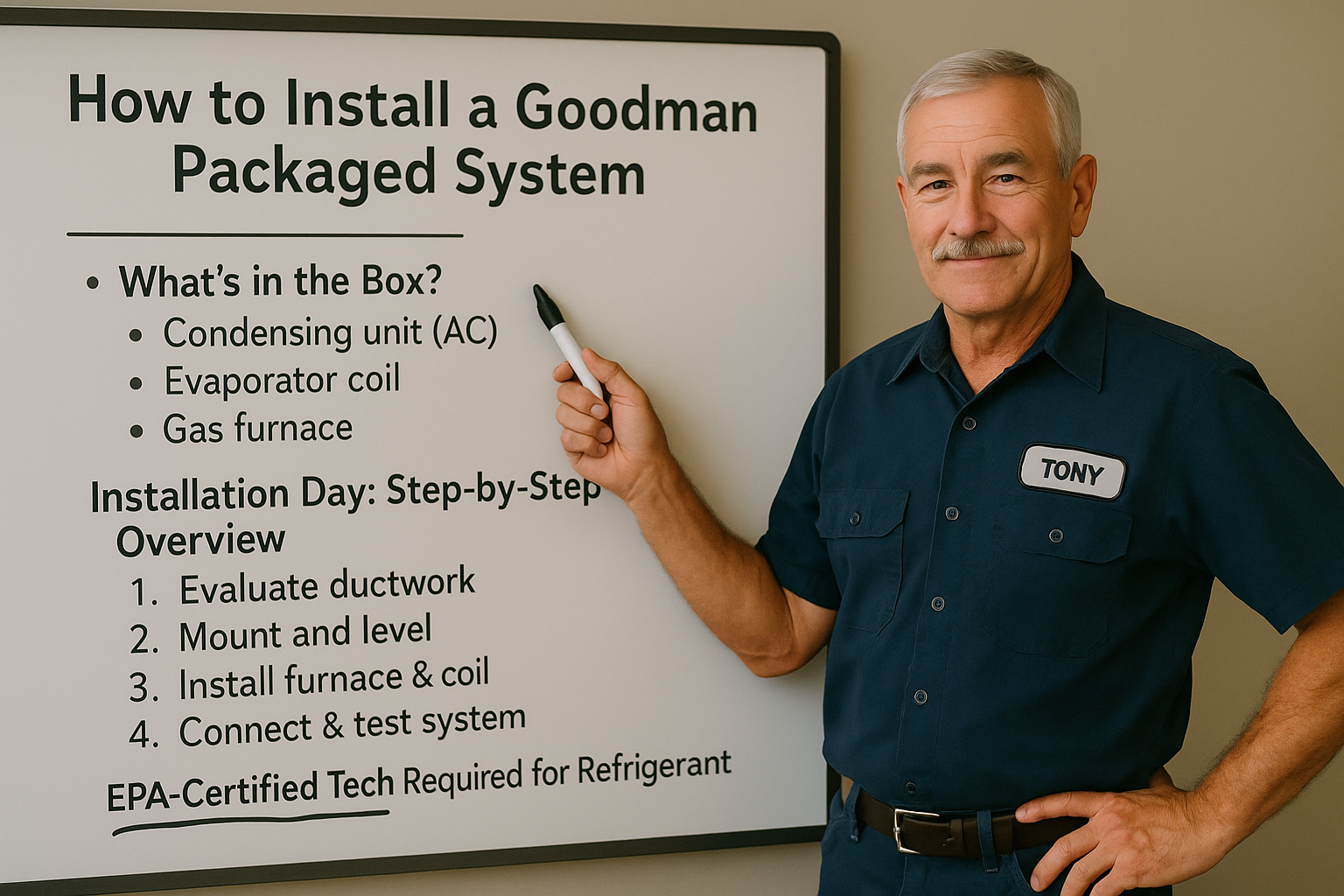Buying a new HVAC system is a big investment—but installing it right is what actually delivers the comfort and energy savings you paid for. Whether you’re hiring a contractor or doing part of the work yourself, here’s what Tony wants you to know about how a Goodman system like this one is installed.
📦 What’s in the Box?
A full Goodman split system (like the GLXS3BN2410 condenser + CAPTA2422B3 coil + GR9S960803BN furnace) includes:
-
Outdoor condensing unit (AC)
-
Indoor evaporator coil
-
High-efficiency gas furnace
-
Optional line set and thermostat
This isn’t a pre-charged all-in-one unit—each component is installed separately and connected on-site.
👉 Goodman Installation Manuals (PDFs)
🧰 Installation Day: Step-by-Step Overview
Here’s what most pro installers do:
-
Evaluate ductwork and airflow direction
-
Check if it's vertical or horizontal
-
Ensure return/supply lines are sized right
-
-
Mount and level the condenser
-
Place on concrete pad or plastic base
-
-
Install the furnace
-
In basement, attic, closet, or utility room
-
-
Install coil above or below furnace
-
Match vertical/horizontal orientation
-
-
Run refrigerant line set
-
Connect condenser to coil
-
-
Connect wiring and thermostat
-
Pressure test & vacuum lines
-
Essential for refrigerant performance
-
-
Charge refrigerant
-
Must be done per manufacturer spec
-
-
Test system
-
Confirm correct airflow, temps, cycle time
-
👉 HVAC System Installation Overview – This Old House
⚖️ Professional vs DIY: What to Know
Goodman systems are DIY-friendly—but only up to a point. Installing the furnace and coil can be handled by experienced DIYers. But charging refrigerant and testing pressure must be done by an EPA-certified technician.
👉 EPA 608 Certification Requirement – EPA.gov
If you DIY part of the install, consider:
-
Hiring a tech for refrigerant and final test
-
Pulling local permits for furnace work
-
Checking gas line codes for safety
🧯 Safety & Code Considerations
-
Furnaces must be vented correctly to avoid carbon monoxide
-
Condensers must have clearance from siding, decks, and fences
-
Many areas require inspection for gas, refrigerant, and electrical work
-
Follow local building codes and manufacturer instructions
👉 Home HVAC Installation Checklist – ENERGY STAR
🛠️ Tony’s Tip
“If you’re not EPA-certified, don’t mess with the refrigerant. Do your part—set the pad, wire the thermostat, mount the coil—but bring in a tech to pull vacuum and charge the system. That’s how you protect your warranty and your house.”
In the next topic you will know about: Maintaining Your 96% AFUE Furnace: A Seasonal Checklist







